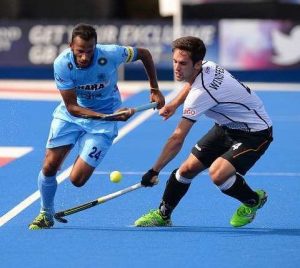How Many Periods Are in Hockey
Hockey, a fast-paced and exhilarating sport played on ice or field, is divided into distinct segments known as periods. These periods structure the flow of the game and allow players to showcase their skills, teamwork, and strategy in a dynamic manner. Whether it’s ice hockey or field hockey, the concept of periods adds an element of rhythm to the game, enabling players and spectators alike to experience the ebb and flow of action as teams battle for supremacy.
Understanding the Periods
What Are Periods in Hockey?
In the context of hockey, periods refer to the distinct segments that divide a game. Each period offers players a chance to showcase their skills and strategies, adding layers of excitement and anticipation.
The Traditional Format
Historically, hockey games were played in three periods, and this format remains prevalent today. Each period typically lasts for 20 minutes of actual gameplay, excluding stoppages. Players use these segments to battle it out on the ice, aiming to outscore their opponents and secure victory.
The Reasons Behind the Structure
Managing Player Fatigue
The decision to divide hockey games into periods is rooted in practicality. The sport’s high-intensity nature demands bursts of energy, and by implementing periods, players can recover during breaks, ensuring the game maintains its speed and dynamism.
Television and Commercial Considerations
Television broadcasting plays a crucial role in the popularity of hockey. The three-period structure allows for commercial breaks, enabling broadcasters to air advertisements without interrupting the flow of the game excessively. Also, read about the England National Football Team vs France National Football Team Stats
Strategy and Adjustments
Coaches strategize and adapt their game plans during intermissions. With multiple periods, they can evaluate the team’s performance and make necessary adjustments, contributing to the tactical depth of the sport.
Variations and Exceptions
Overtime and Shootouts
While traditional hockey games consist of three periods, certain situations call for extra time. In case of a tie at the end of regulation, teams proceed to overtime. Overtime periods vary in length, aiming to determine a winner. If the tie persists, a shootout may follow, adding a dramatic twist.
International and Women’s Hockey
Interestingly, international and women’s hockey often deviate from the three-period norm. Some leagues opt for shorter periods, such as two periods of 30 minutes each. These variations accommodate different schedules and player needs.
The Significance of Periods
Maintaining Excitement
By breaking the game into periods, hockey keeps fans engaged. The brief intermissions build tension and anticipation, enhancing the overall experience for both spectators and players.
Showcasing Adaptability
The division into periods highlights players’ ability to adjust to changing circumstances. As the game progresses, teams adapt their strategies, adding a layer of unpredictability that makes each period compelling.

Hockey’s Evolution
The use of periods in hockey has evolved over time. The three-period format has remained relatively consistent, but other rules and gameplay elements have changed to enhance the sport’s entertainment value and fairness. These changes reflect the sport’s commitment to growth and adaptation.
Hockey Periods vs. Other Sports’ Quarters
Hockey’s use of periods distinguishes it from other sports that employ quarters or halves. This unique structure contributes to the fast pace and dynamic flow of the game. While quarters and halves may work well for some sports, the three-period format aligns perfectly with hockey’s nature and objectives.
The Importance of Periods
Periods in hockey serve as natural breaks that keep the game manageable for players and enjoyable for fans. These divisions allow players to showcase their skills while maintaining a high level of intensity throughout the match. Periods also contribute to the strategic depth of the game, giving teams the opportunity to adjust their tactics as needed.
Physical and Mental Endurance
Hockey players need to possess both physical and mental endurance to succeed. The rigorous demands of the game require players to maintain their stamina over the course of three periods. Additionally, staying focused and mentally sharp is essential for making split-second decisions during gameplay.
Fan Engagement and Expectations
The structure of hockey games with multiple periods keeps fans engaged and invested. The game’s ebb and flow, coupled with the potential for sudden momentum shifts, create an environment where anything can happen. This unpredictability keeps fans on the edge of their seats, eagerly anticipating each period’s outcome. Discuss more Japan National Football Team vs Croatia National Football Team
Influential Periods in History
Throughout hockey’s history, there have been periods that stand out due to their significance and impact. These periods have shaped the course of games, seasons, and even entire franchises. From comebacks to upsets, the history of hockey is punctuated by moments that occurred within the confines of these distinct periods.

Conclusion
In the world of hockey, the structure of periods plays a pivotal role in shaping the game’s dynamics. The division into segments allows for strategic adjustments, commercial considerations, and maintaining a high level of excitement. Whether it’s the traditional three-period format or variations in other leagues, periods remain an integral part of hockey’s identity.
FAQs
Why are hockey games divided into periods?
Periods in hockey serve multiple purposes, including managing player fatigue, accommodating television broadcasts, and providing opportunities for strategic adjustments.
What happens during overtime in hockey?
Overtime occurs when a game ends in a tie. Teams play additional periods to determine a winner, and if necessary, a shootout follows.
Do all hockey leagues use three periods?
While the traditional format involves three periods, variations exist, especially in international and women’s hockey, where different time structures are employed.
How long is a typical hockey period?
A standard hockey period consists of 20 minutes of actual gameplay, but the total time is longer due to stoppages and intermissions.
How do periods add to the excitement of hockey?
Periods introduce breaks and opportunities for teams to adjust their strategies, building suspense and maintaining a high level of excitement throughout the game.
